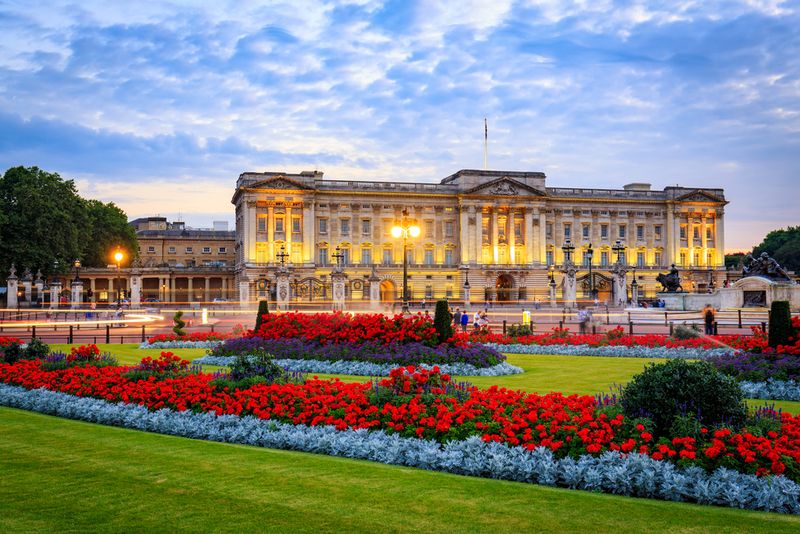Buckingham Palace, an emblem of sovereign grace and architectural splendour, stands as a testament to the enduring legacy of the British monarchy. Situated in London, this iconic edifice is the official residence of the reigning monarch along with this it also embodies centuries of history, a repository of art, and a beacon of cultural heritage.
Its origins, tracing back to a private dwelling built for the Duke of Buckingham in 1703, mark the commencement of a fascinating narrative that has evolved with each monarch's reign. Over time, Buckingham Palace has transcended its initial purpose, morphing into a grandiose symbol of national identity and royal tradition.
This stately home, with its majestic façades and lush gardens, invites us on a journey through time, offering a glimpse into the lives of those who have walked its corridors and shaped its destiny. As we peel back the layers of its illustrious past, Buckingham Palace reveals itself not just as a fixture of royal opulence, but as a living, breathing entity that continues to play a pivotal role in the tapestry of British life.
Here’s a sneak peek inside Buckingham Palace, know some interesting facts

The genesis of a royal residence
Contrary to popular belief, Buckingham Palace's origins were quite humble. Originally built for the Duke of Buckingham in 1703, it was acquired by King George III in 1761 as a private residence for Queen Charlotte, earning it the moniker "The Queen's House." Through successive reigns, the palace underwent numerous renovations and expansions, transforming it into the iconic structure we recognize today. It officially became the principal royal residence in 1837 under Queen Victoria, setting the stage for centuries of royal history.
An architectural evolution
The transformation of Buckingham Palace from a private house to a grand royal residence is a testament to the vision of its architects, including John Nash, who was commissioned by George IV. The palace's façade, with its famous balcony added during Queen Victoria's reign, has become an emblematic site for national celebrations, including the annual Trooping the Colour.
A guardian of art and history
Buckingham Palace is a veritable fortress of art and history, housing the Royal Collection, one of the most important art collections in the world. This includes masterpieces by Rembrandt, Vermeer, and Leonardo da Vinci, among others. Each room within the palace walls is a treasure trove of historical artefacts, exquisite furniture, and ornate decorations, narrating the rich tapestry of Britain's royal heritage.
The secret garden oasis
The Buckingham Palace gardens, a 39-acre oasis in the middle of London, are a testament to the palace's hidden wonders. These private gardens, which host the Queen's annual garden parties, are a sanctuary for a diverse range of flora and fauna, including a historic mulberry tree planted by Queen Victoria herself. The gardens offer a serene retreat from the bustling city, embodying the palace's multifaceted character.
A beacon of royal duty
Beyond its opulence and historical significance, Buckingham Palace functions as a bustling hub of royal work. Housing around 800 staff members, it supports the day-to-day operations of the royal family, from state functions and official receptions to personal engagements. This aspect underscores the palace's role as not just a residence but a working royal institution.
Ceremonial splendour — The changing of the Guard
One of the most iconic traditions associated with Buckingham Palace is the Changing of the Guard ceremony. This spectacle of precision and pageantry is a vivid display of British military tradition, attracting visitors from around the globe and symbolizing the enduring spirit of the British Army.
A symbol of resilience
Buckingham Palace's history is marked by moments of profound resilience, notably during World War II, when it sustained damage from German bombs. The decision of King George VI and Queen Elizabeth to remain in the palace throughout the bombings became a symbol of unwavering strength, aligning their fate with that of their people.
Exploring the Palace today

Today, Buckingham Palace is more than a royal residence; it's a living museum open to the public during the summer months, offering a glimpse into the royal lifestyle and Britain's storied past. Visitors can explore the State Rooms, witness the grandeur of the royal collection, and stroll through the magnificent gardens, experiencing the legacy of one of the world's most famous royal residences. Yes, to explore all this all you need to do is buy Buckingham Palace tickets, and there you go a sanctuary of royalty open.
Buckingham Palace stands as a beacon of history, tradition, and cultural significance, embodying the essence of the British monarchy. Its walls hold stories of the past, its galleries showcase artistic marvels, and its presence continues to inspire and intrigue millions around the world. As we walk through the corridors of Buckingham Palace, we are not just exploring a palace; we are journeying through the annals of history, uncovering the layers of tradition and ceremony that define the British royal family.


_1709014699556_thumb_1200.jpeg?w=3840&q=75)